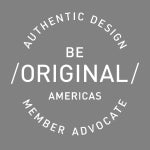Teaching Statement
Industrial Design in the 21st century transcends the notion of objects. The things we design and put into the world now must be considered and created within larger contexts and systems of meaning. Today, we rarely act as the siloed practitioners of the past, but rather as design specialists who participate in interdisciplinary teams organized to address complex issues and solve the problems that emerge from the collective investigation. Every aspect of design is part of this larger ecosystem influencing and impacting the environment, economics, technology, manufacturing, and society. This holds for design education as much as it does for design practice and our teaching goals must reflect this new reality further defining a better future for all.
Specifically, the aims of design education must be broadened from traditional understandings of consumer-driven goods and/or theoretical singular objects that have no real context or substantive impact on society. Designers of today and tomorrow need to understand the gravitas of their efforts and impact. They will shape the future not only through well-designed objects and systems but also by their ability to provide solutions to large-scale problems. Thus, it is our responsibility as design educators to teach our students to be leaders driving social, technological, and environmental innovation.




